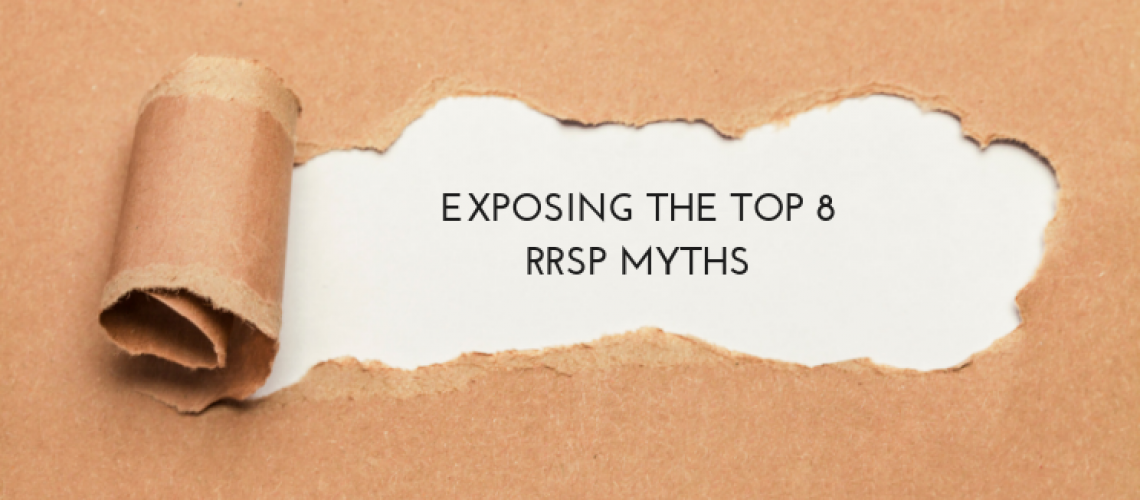If you’re saving for retirement, there are several accounts you can choose from, including an RRSP. However, many Canadians have misconceptions about the various options that are available. There are many misconceptions about the Registered Retirement Savings Plan. Read below for a breakdown of the top 8 RRSP myths.
Myth #1: If I Have Other Sources of Retirement Income, I Don’t Need an RRSP
Many people think that they don’t need an RRSP because they have multiple income sources, but it provides some of the best tax advantages around. For example, non-registered savings accounts can be used to build a nest egg, but they don’t provide the tax efficiency that an RRSP is able to deliver.
Equity in a primary residence is often used for retirement purposes, and this method certainly is able to generate tax advantages on capital gains. But, choosing this option loses the diversification that an RRSP is able to provide.
Myth #2: If I Put Too Much into an RRSP, My Estate Will Get Hit with a Massive Tax Bill
A surviving spouse automatically inherits the other spouse’s RRSP completely tax-free. While withdrawals from an RRSP are taxed, they aren’t required until the year you turn 71. At this age, an RRSP can be converted into a Registered Retirement Investment Fund (RRIF), which requires minimum annual withdrawals, but only a certain percentage must be withdrawn per year, and only that amount is taxable.
Myth #3: It Takes Too Long to Receive My Tax Refund
This falsehood is easily rebutted with the facts of Ottawa’s rules. Contributions can be made either to an Individual RRSP or to a Group RRSP. Contributions to a group plan are deducted from a paycheck’s gross salary before taxes are assessed. This reduces the amount of tax owed straight away.
For example, let’s say you contribute $400 per month to a group plan. The drop in take-home pay would only be $280, assuming a tax rate of 30%. You would immediately realize a $120 tax break.
Myth #4: RRSP’s Provide a Tax Exemption
Technically, accounts are tax-deferred. That means money is put in pre-tax, which reduces the amount of tax owed to the government—on every paycheck for a group plan or at the end of the year for an individual plan. From that point until withdrawal, earnings in the form of interest, dividends, and capital gains are not taxed. Effectively, your nest egg remains in a 0% tax bracket during these years. When you start making withdrawals from the RRSP, tax will be owed at your marginal rate, which for many Canadians is lower during retirement.
Myth #5: When I Reach 71, All Assets Have to Be Sold Off
On the contrary, all assets, including Guaranteed Investment Certificates, can simply be transferred into an RRIF. No sales of securities are needed to do this conversion. At this point, the assets would need to generate enough income to meet the required minimum annual withdrawals. A fixed-income fund or REIT fund may be able to satisfy this requirement.
Myth #6: You Can Only Withdraw Funds From an RRSP After You Reach Retirement Age
Contrary to popular belief, it is possible to withdraw funds from an RRSP at any time. Bear in mind, however, that doing so before 71 will incur a withholding tax, and the amount taken out will also be subject to taxation at your marginal rate.
Despite these policies, the taxman has been kind enough to carve out some exceptions. For example, it’s currently possible for first-time homebuyers to borrow up to $25,000 tax-free in a calendar year from an RRSP to build or purchase a home. The Lifelong Learning Plan also permits RRSP withdrawals of $20,000 with no tax implications if the funds are used for education or job training.
Myth #7: It’s Too Difficult to Manage an RRSP
You may not feel comfortable making all the investment decisions in your RRSP, so seeking professional advice may be best. A financial advisor can help you understand what your best options are when it comes to RRSPs and help you maintain them.
Myth #8: A TFSA Is a Better Option Than an RRSP
Contributions to a Tax-Free Savings Account (TFSA) are made with after-tax dollars and withdrawals are tax-free. This is the opposite system that the RRSP operates by. But such a tax scheme won’t be an advantage for everyone. If you are in a lower tax bracket during retirement, the RRSP is often a better choice. Also, the RRSP has a much higher contribution limit than the TFSA ($26,500 versus $6,000 for 2019). Choosing between the two is dependent upon what works best for you.
Understanding RRSPs and what works best for your retirement situation can be complicated. For most Canadians, it’s one of the most valuable retirement assets they have. If you have any questions about RRSPs or retirement planning, contact us directly.
